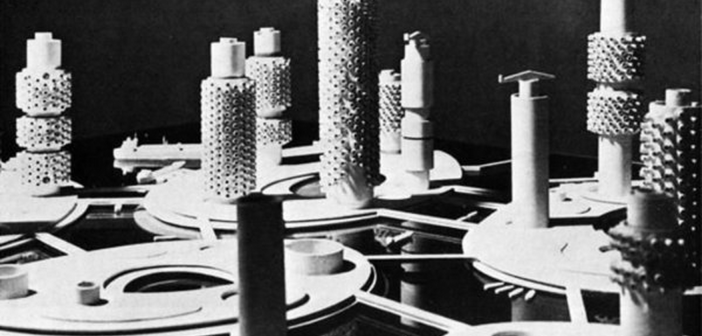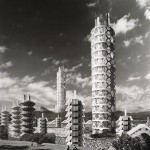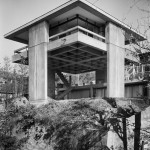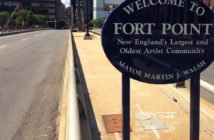A new exhibit at the Harvard Graduate School of Design pays tribute to the work of visionary Japanese architect, Kiyonori Kikutake (1928-2011). In Kikutake’s first solo North American show the focus is on the architect’s commitment to the principals of Metabolic architecture and highlights the possibilities for future cities housed above land and sea.
Kikutake first gained international recognition for his Sky House and Marine City designs at the 1959 Congrès Internationale d’Architecture Moderne Conference in Otterloo. These designs were then prominently included during the launch of the Metabolism group the following year at The World Design Conference in Tokyo under the leadership of Kenzo Tange and the Visionary Architecture exhibition in New York in 1961. The ideas of the Metabolists focused on unique utopian planning theories of transformative architecture, built for a changing Japan in a rapid post-WWII recovery, that prepared both for worst-case scenarios and the ability to evolve to meet future societal changes while still existing in harmony with nature.
The renderings and designs of Kikutake’s architectural endeavors feel at home in the Harvard GSD’s Gund Hall, itself a structure built out of Brutalism’s own philosophical approach to urban utopia. What I found myself most drawn to, however, was the model of Kikutake’s Marine City. Constructed on top of a translucent blue cube, the ‘city’ floats on the surface of the sea, connected to the land by only a small number of tethers attached to the ocean floor. The model, starkly white and carrying a distinct presence, sticks out as an other-worldly concept among his other designs. For a moment I thought that it acted as both the most creative example of Kikutake’s vision of high-density, sustainable development—one able to both free Japan’s booming post-war population from overcrowded cities while still providing modular, adaptive and tectonically-sound living—and as the most dated fantasy for a utopian future. Though in that same moment I recalled an interview with Vito Acconci conducted by Bryant Rousseau for The Architectural Record . In it, Rousseau asks Acconci if he cares whether his architectural designs will ever be seen in the same light as his art. Acconci replies:
I do care. I don’t know if I want the design work to be held in esteem. I might not be so interested in esteem, but I am very interested in influence. Not that I want people to do copies of work we do, but I want it to be a starting point for others.
And then I felt that I understood Kikutake's desire to design for the sea, not because he thought the idea would be considered viable for living by the present public, but because he knew he had the ability to influence those who came after him and make that idea more viable for the future.
Tectonic Visions between Land and Sea: Works of Kiyonori Kikutake is on view at the Harvard Graduate School of Design’s Gund Hall, 42 Quincy Street, Cambridge, now through October 16th. On Tuesday, September 11th at 6:30 p.m. a panel discussion about the exhibition, moderated by the curator, Ken Oshima, and Mark Mulligan, adjunct associate professor of architecture at the Harvard GSD, will occur in Gund Hall’s Piper Auditorium. The event is free and open to the public. A gallery talk will follow.
- Model of floating city, Kiyonori Kikutake, 1962
- Ecopolis, Kiyonori Kikutake, early 1990s
- Sky House, Kiyonori Kikutake, 1958 Photo courtesy of Kawasumi Architectural Photograph Office







